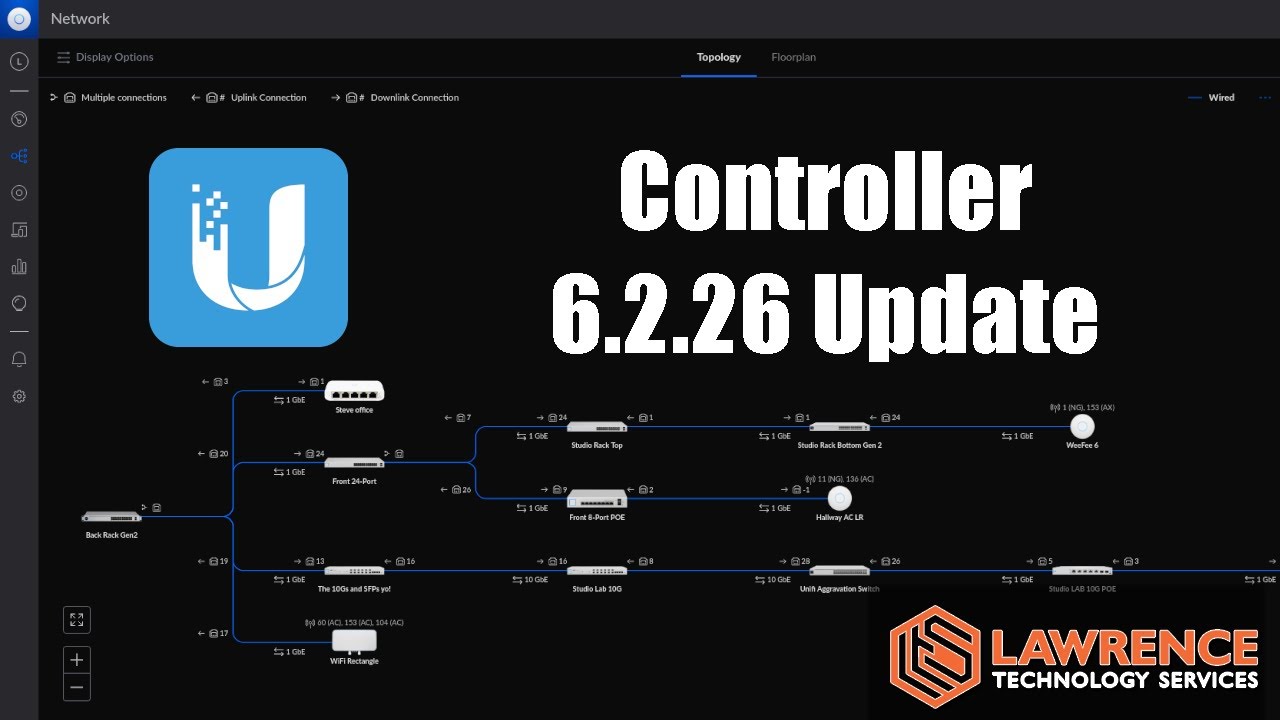Thank you @LTS_Tom. I usually hold off on controller upgrades for my controller, so it’s great to see you letting us know if it is safe. 
Upgraded our production controller and no issues here either. Agree with @LTS_Tom the new UI is hot garbage. Stuff is hidden and the overall workflow is now broken. Clients that manage their own systems are lost with the new UI. Hope UniFi corrects this, they have a great product line and would hate to see them lose the market because of this. IMHO it would be a great to see UniFi put the UniFi Controller out as an open source project. If they don’t correct the UI and maybe a few other things, I think this would be a significant “crack in the armor” that could give a competitor an opportunity to compete.
Upgraded mine and no issues…
I do have a couple of questions related to the Wifi metrics on the dashboard. Can I trust they are accurate? I am seeing one of my three APs showing ALOT of dropped packets and trying to understand what is causing it. I have found some of the information is not accurate.
In general the metrics are reliable and can be trusted. Dropped packets can be for a lot of reasons.
First questions
- Is the performance noticeably affected?
- What devices are having the loss? (dig into the controller dashboard to see which devices are affected)
It’s normal to see some packet loss on stable healthy networks. In general the more devices based on legacy standards, the more errors.
Off the top of my head here is my 0.02 cents on the issue
- Congested WiFi environment (lots of neighbors with WiFi)
- Lost of physical stuff between the AP and the client causing interference; (ex. Steel reinforced concrete walls, floor or ceilings, metal stuff between the AP and clients, 3 or more floors between the AP and clients.)
- Clients using old WiFi standards like “Wireless G 54” - Anything in the 2.4 GHz band is basically old legacy garbage. Using bandwidth steering, push capable clients to 5 GHz and if you have to use 2.4 GHz, set the threshold for 2.4 GHz high to prevent performance issues
- Driver issues on the client device
Other less common thing I have seen
- Ethernet cables installed next to noisy electrical devices like fluorescent lights, neon signs, radio amplifiers, circuits with large running electrical motors etc (RFI)
- Using CCA (copper clad aluminium) Ethernet cable for PoE
- Using a non-PoE switch to run a PoE AP
- PoE power injector damaged
- Splicing Ethernet cabling instead of using a switch (don’t ask how I know this)
- Damaged Ethernet cabling
- Overloaded or misconfigured networking switch
- Use of a hub (very rare to see these today) vs use of a switch
- Poor quality networking equipment
- Lightening Damaged switch port (fairly common here in Central Florida because of frequent thunderstorms)
- Misconfigured firewall\gateway
What this turns out to be is the firmware used for the APs. I was running on 5.43.36 for all my APs. I dropped back to 4.3.28 and 90% of the dropped packet issues have gone away. Also one other thing I was noticing were intermittent AP disconnects during the day and these have now gone away. I am going to stay on this firmware until I feel the 5.x release is stable. It looks positive that 5.43.37 and 38 are going in the right direction.
 https://twitter.com/TomLawrenceTech
https://twitter.com/TomLawrenceTech![]() Lawrence Systems's Amazon Page
Lawrence Systems's Amazon Page![]() https://www.lawrencesystems.com/partners-and-affiliates/
https://www.lawrencesystems.com/partners-and-affiliates/![]() Kit: at-home health testing for your business
Kit: at-home health testing for your business![]() Learn technology and pass IT certifications with ITProTV
Learn technology and pass IT certifications with ITProTV![]() https://www.techsupplydirect.com/
https://www.techsupplydirect.com/![]() DigitalOcean | Cloud Hosting for Builders
DigitalOcean | Cloud Hosting for Builders![]() HostiFi - UniFi Cloud Hosting
HostiFi - UniFi Cloud Hosting![]() Buy VPN with Credit Card or PayPal | Private Internet Access
Buy VPN with Credit Card or PayPal | Private Internet Access![]() lawrencesystems | creating Tech Tutorials & Reviews | Patreon
lawrencesystems | creating Tech Tutorials & Reviews | Patreon
